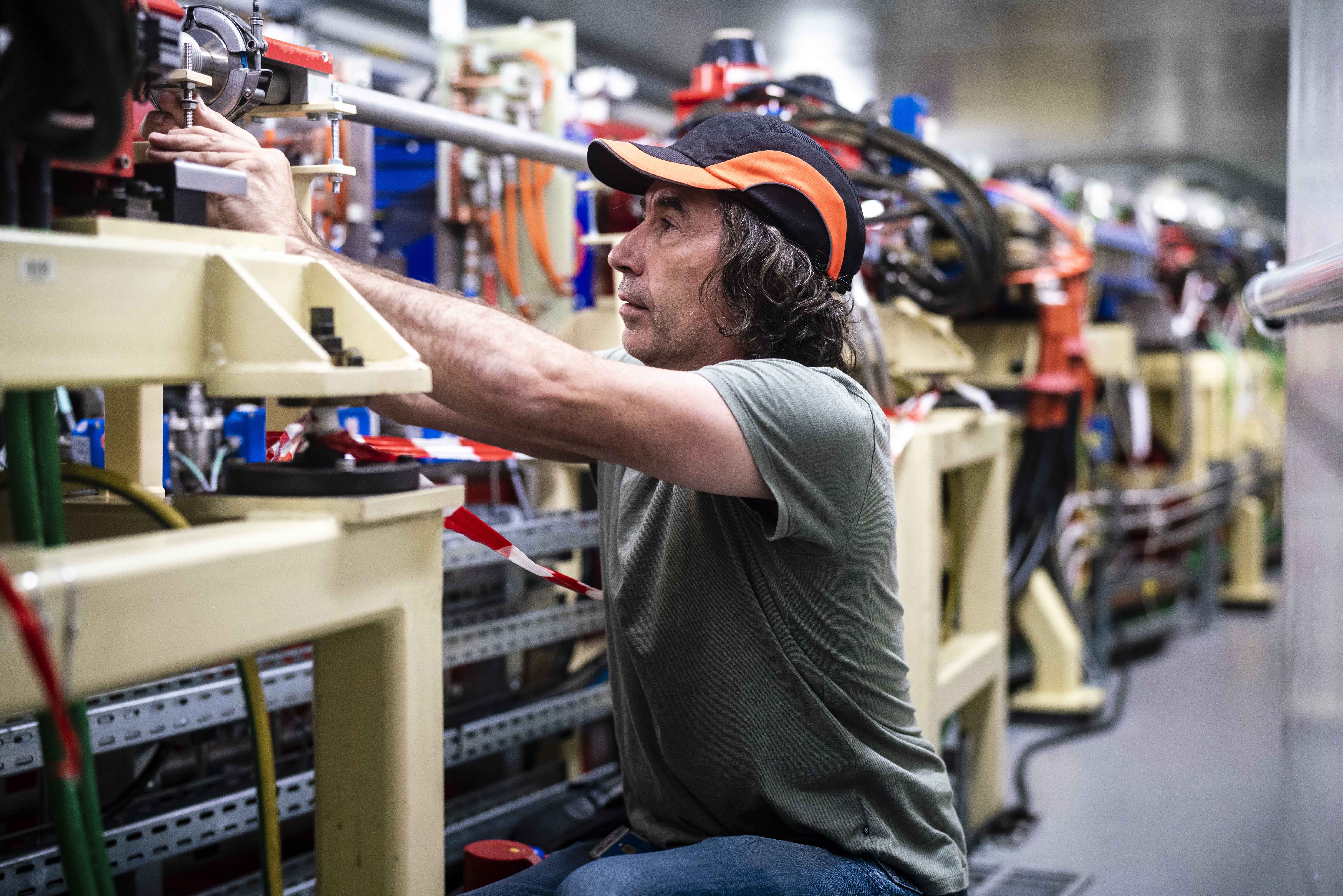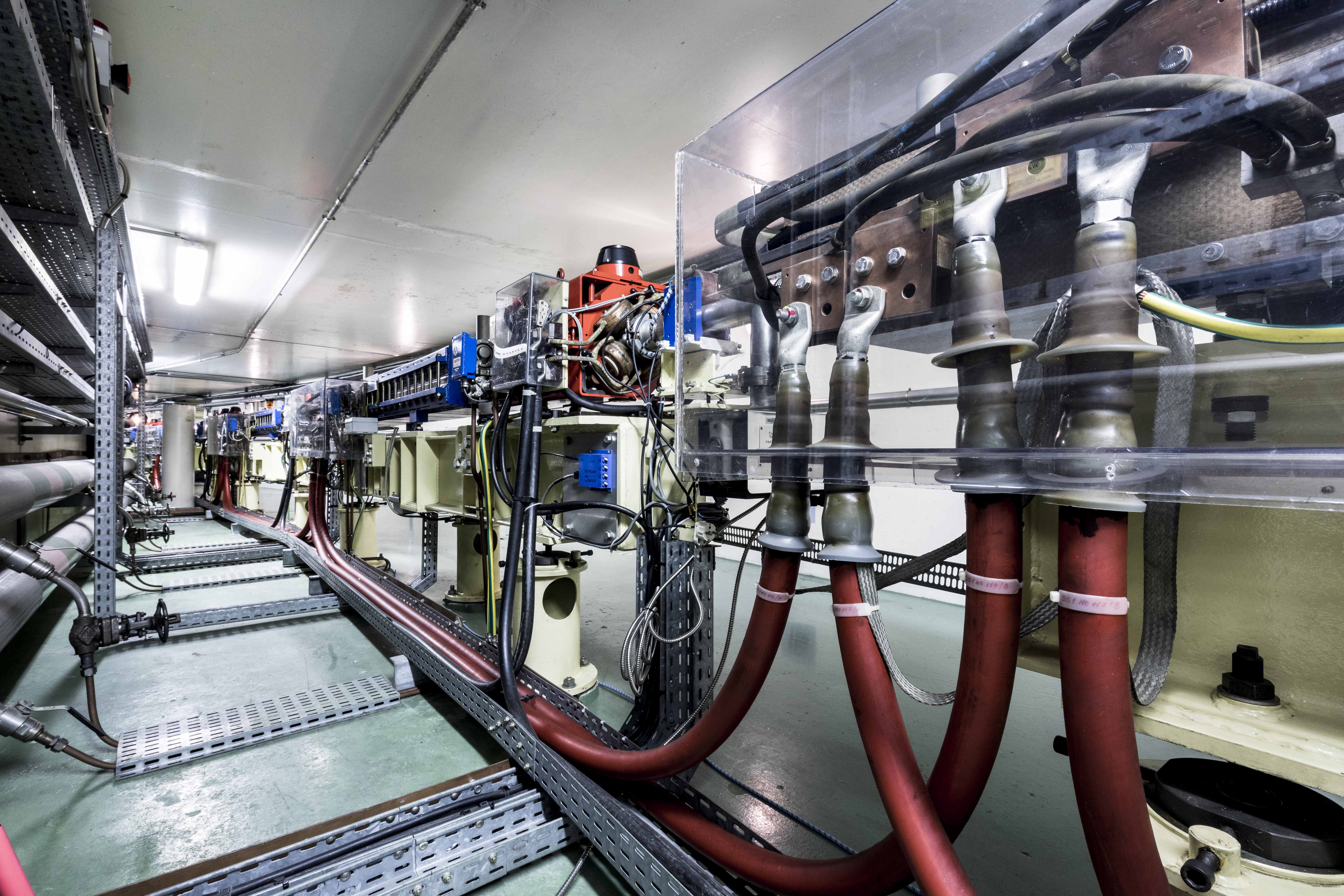Although the Extremely Brilliant Source project is based around the construction of a brand new storage ring, it is not just the ring that has had an upgrade. In preparation for the new lattice, the injection system has also had an overhaul.
The injection complex is comprised of the source and linear accelerator, where electrons are produced; the booster, where particles are accelerated to their operating energy of 6 GeV; and the transfer line, which extracts electrons from the booster and injects them into the storage ring, where they join the stored bunches at a rate of four times per second.
 Work is being carried out on the transfer line, where accelerated electrons are sent from the booster to the storage ring. Photo: S. Candé/ESRF.
Work is being carried out on the transfer line, where accelerated electrons are sent from the booster to the storage ring. Photo: S. Candé/ESRF.
The main change is the reduction of the booster circumference by 11 cm in order to preserve it size ratio with the new, slightly shorter storage ring. This precise and painstaking operation involved moving each 6-tonne girder in the booster inwards by just 17 mm! The operation of the booster will also be changed, to reduce the equilibrium emittance (how tightly the electrons are packed together), which will improve the efficiency of the injection into the storage ring.
 Each supporting girder in the booster was moved inwards by 17 mm to reduce the circumference. Photo: S. Candé/ESRF.
Each supporting girder in the booster was moved inwards by 17 mm to reduce the circumference. Photo: S. Candé/ESRF.
Hardware in the booster, including the power supply and RF cavities, has also been upgraded to cope with the extra demand placed on the injection system by a new and more frequent method of filling the storage ring: top-up operation. Keeping the storage ring ‘topped up’ with electrons (as opposed to injecting them once every four to six hours, as previously) is necessary to compensate for the lower lifetime that will accompany the lower emittance and brighter beam of the Extremely Brilliant Source.
The radio-frequency cavities in the booster have been upgraded in preparation for EBS. Other upgrades include replacing one of the electromagnetic septa magnets in the transfer line with a permanent magnet, the field of which is more consistent, and providing other magnets with better power supplies and feedback systems.
All these improvements will ensure greater beam stability from the supercharged source and thus better data quality for scientists.